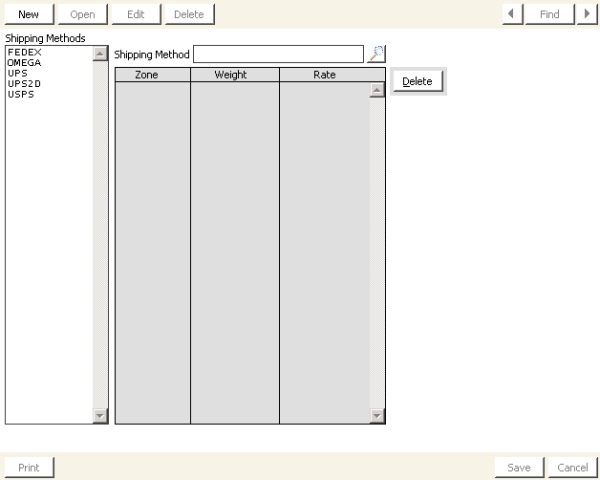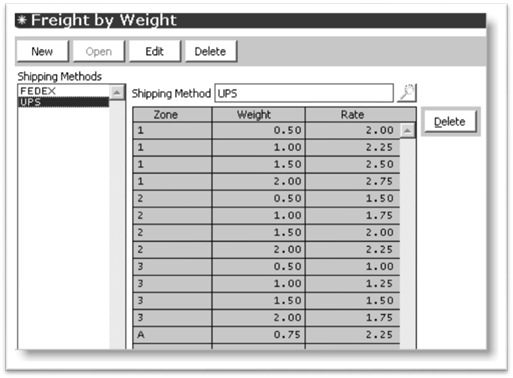Set up freight by weight window

Shipping Methods
Displays the shipping methods for which you have defined weight tables.
Shipping Method
Enter the shipping method for which you are defining a weight table. Select the Find icon to look up a shipping method.
Shipping methods are defined on the SHIP_METHOD general lookup/validation table (from Customers, select Set up tables > General lookup/validation).
Zone
Enter the designation for a shipping zone. The zone designation follows the postal code as defined in the Default Zone field and the Table list on the Set up zones window (from Orders, select Set up tables > Zones).
Weight
Enter the weight break for a shipping zone, which is the maximum weight.

For example, in the above image of the Set up freight by weight window, any weight greater than 1.00 and less than or equal to 1.50 will be charged $2.50 for Zone 1. Any weight greater than 1.50 and less than or equal to 2.00 will be charged $2.75 for Zone 1.
Rate
Enter the freight rate for orders of the defined weight that are shipping to the specified zone.
To define weight tables
- From Set up freight by weight window, click New to create a new weight table, or select an existing Shipping Method and click Edit to modify the table (or click Delete in the top row of buttons to remove the table).
- Specify the weight table information.
- To create new rows in the table for zone-weight-rate sets, position your cursor in the Rate cell of the last row in the table and press Tab.
- To delete rows from the table, position your cursor in the Rate cell of the row to be deleted and click Delete at the right of the table.
- Click Save.
Be sure to define at least one entry for every zone designator that is used in the various shipping zone tables that use this shipping method. (These designators are used in the Default Zone and Table fields of the Zones window.)
For example, assume you have defined a UPS zone table and a UPS-USA zone table, and you have used zone designators A, 1, 2, and 3 in those two UPS-based zone tables. In this example, you would define weight-rate sets for those four zone designators.